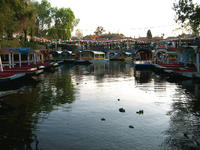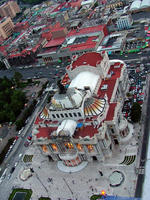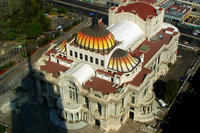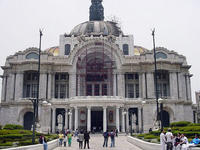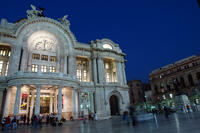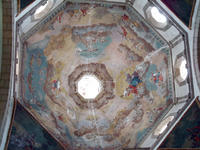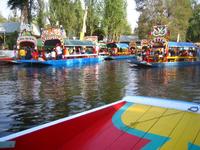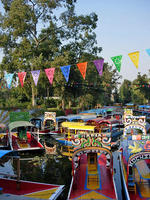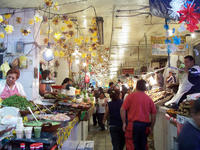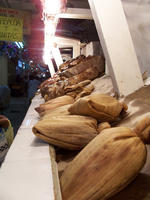You are in: North America -> Mexico -> Historic Centre of M... , and traditional search or Image Gallery will yield results of this site only
Historic Centre of Mexico City and Xochimilco
| Site number: | 412 |
|
| Type of site: | Cultural | |
| Date: | 16th century | |
| Date of Inscription: | 1987 | |
| Location: | North America, Mexico, District Federal. Delegations: Cuauhtemoc, Venustiano Carranza et Xochimilco | |
Up to 75 images are shown here. Click on each for more details or on Image Gallery for more images.
| Description: | Built the Spanish in the 16th century on the ruins of the old Aztec capital - Tenochtitlan, currently Mexico City is among the world's largest and most tightly populated cities. The ruins of five Aztec temples survive to this day; they have been identified as a cathedral (the continent’s largest) and a number of fine 19th- and 20th-century public buildings for instance the Palacio de las Bellas Artes. 28 km south of Mexico City lies Xochimilco, with its system of canals and man-made islands, it bears witness to the Aztec people’s labours as they built a habitat in the middle of a hostile environment. Though built since the 16th century and during the colonial period, the site’s distinguishing urban and rural structures have been preserved in an excellent condition. --WHMNet paraphrase from the description at WHC Site, where additional information is available. | |
| Xochimilco IPA: [so.tʃi.ˈmil.ko] (Nahuatl xóchitl = flower; milli = cultivated field; co = place) is one of the sixteen delegaciones within Mexican Federal District. It is located south from Mexico City. To the north it has borders with Coyoacán, Tlalpan and Iztapalapa; to the west with Tláhuac; and to the southeast with Milpa Alta. It covers an area of 122 km^2; it is the third biggest delegación. Xochimilco is better known for its extended series of canals — all that remains of the ancient Lake Xochimilco. Xochimilco has kept its ancient traditions, even though its proximity to Mexico City influence that area to urbanize. Movies like Maria Candelaria (1940), have given that area a romantic reputation where all inhabitants travel in colourful trajineras (Xochimilco boats) between chinampas covered with flowers. Today, agriculture is an important but minor activity -- the canals represent only a small fraction of their former extent. Chinamperia (chinampa-related activities) was declared a World Heritage site by UNESCO in 1987. --Wikipedia. Text is available under the Creative Commons Attribution-ShareAlike License. | ||
| Source: | http://whc.unesco.org/en/list/412 | |
| Source2: | http://whc.unesco.org/en/list/412/video | |
| Reference: | 1. UNESCO World Heritage Center, Site Page. | |




